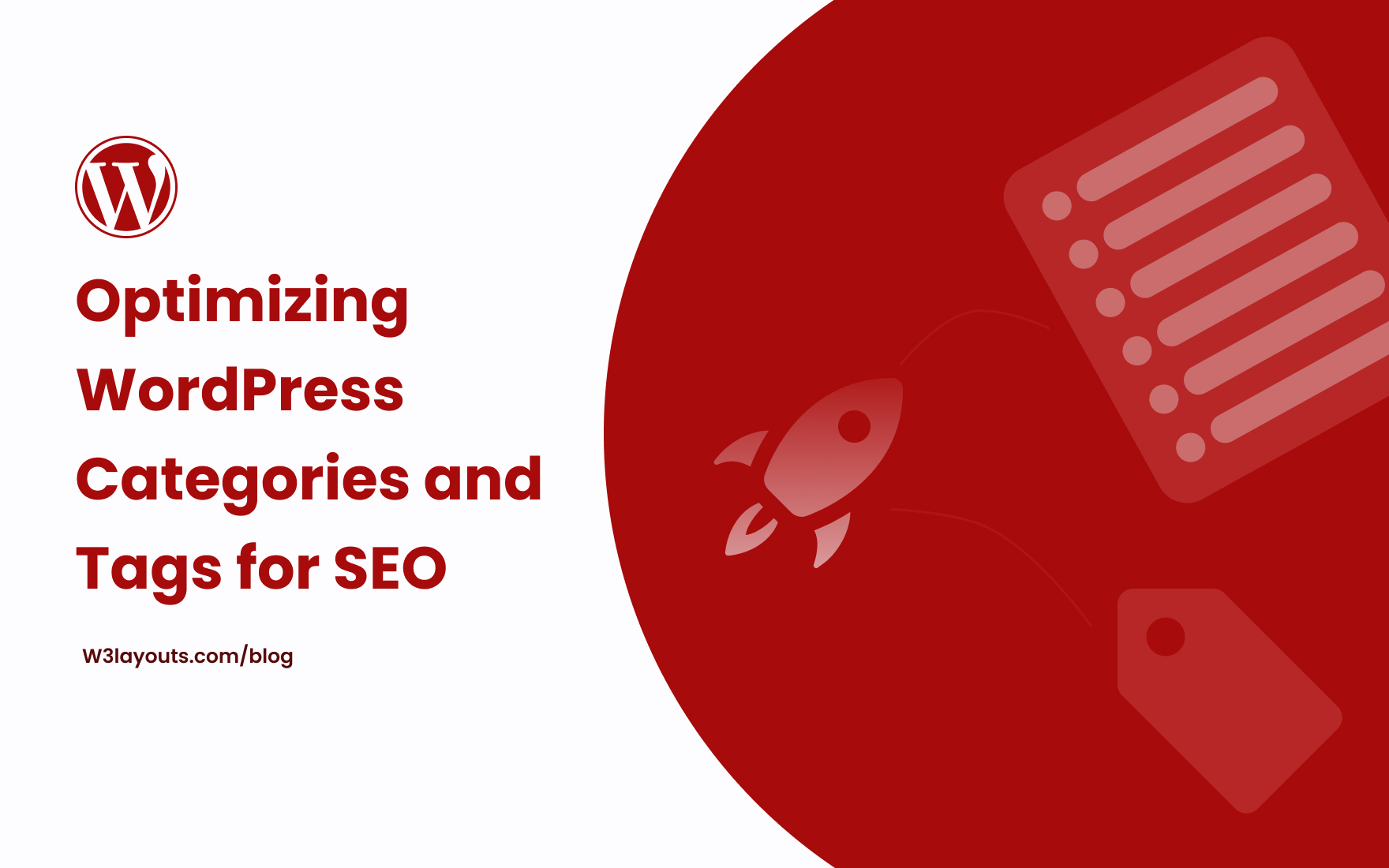Selecting the best WordPress Categories and Tags for SEO Optimization
In the ever-evolving world of online content, search engine optimization (SEO) plays a pivotal role in driving organic traffic to your website. While optimizing your individual posts is essential, harnessing the power of WordPress categories and tags can further enhance your SEO strategy. In this comprehensive guide, we’ll explore the significance of categories and tags, how to optimize them for SEO, and how website templates and WordPress themes can contribute to a well-rounded SEO approach. By the end of this article, you’ll be equipped with the knowledge to maximize your website’s visibility, attracting more visitors and leveraging the potential of your WordPress site.
Chapter 1: Understanding WordPress Categories and Tags
Defining Categories and Tags
WordPress categories and tags are taxonomies used to classify and organize content. Categories are broader, representing the main topics on your website, while tags are more specific, describing the finer details of your content.
The Role of Categories and Tags
Learn why these organizational tools are crucial not only for navigation but also for SEO. Discover how categories and tags can enhance user experience and help search engines understand your content.
Chapter 2: The SEO Benefits of Categories and Tags
Improved Site Structure
Categories and tags provide a structured hierarchy that makes it easier for search engines to crawl and index your content. Learn how to create a logical and organized taxonomy that enhances your site’s structure.
Enhanced User Experience
A well-organized content structure with clear categories and tags helps visitors navigate your site efficiently, leading to longer session durations and lower bounce rates.
Keyword Targeting
Categories and tags allow you to target a wider range of keywords and phrases, increasing the chances of your content appearing in relevant search results.
Chapter 3: Best Practices for Categories and Tags
Strategic Naming
Explore how to choose category and tag names that are both descriptive and SEO-friendly. Learn how to strike a balance between specificity and relevance.
Avoiding Duplicate Content
Discover techniques to prevent duplicate content issues that can arise from excessive tagging or categorizing of posts.
Limiting the Number of Tags
Understand the importance of tag moderation and why it’s beneficial to keep the number of tags per post in check.
Chapter 4: SEO Optimization with Website Templates
Mobile Responsiveness
Website templates that are mobile-responsive provide a better user experience, which is a key factor in SEO rankings. Learn how to choose responsive templates that enhance your website’s visibility.
Speed and Performance
The loading speed of your website is a critical SEO factor. Explore how the design and structure of your website template can impact loading times and user engagement.
Schema Markup
Discover how website templates with built-in Schema Markup can provide search engines with structured data, enhancing your content’s visibility in search results.
Chapter 5: Leveraging WordPress Themes for SEO
SEO-Friendly Code
WordPress themes with clean and optimized code can improve your website’s performance and SEO rankings. Learn how to select themes that prioritize code quality.
Customization Options
Explore the flexibility of WordPress themes and how they allow you to customize your website’s appearance and structure to align with your SEO strategy.
Mobile Optimization
WordPress themes designed with mobile optimization in mind are essential for catering to the growing mobile user base. Learn how to choose themes that provide an excellent mobile experience.
Chapter 6: Measuring and Monitoring SEO Progress
Google Analytics
Utilize Google Analytics to track the performance of your categories and tags. Monitor metrics such as traffic, bounce rates, and conversion rates to assess the impact of your SEO efforts.
SEO Plugins
Discover SEO plugins for WordPress that can help you optimize categories and tags effectively. Plugins like Yoast SEO offer valuable insights and recommendations.
Ongoing Optimization
SEO is an ongoing process. Learn how to continually optimize your categories and tags based on performance data and evolving SEO trends.
Chapter 7: Future-Proofing Your SEO Strategy
Keeping Abreast of SEO Trends
Stay informed about the latest SEO trends and updates, including changes in search engine algorithms and user behavior.
Voice Search and Mobile SEO
Explore how voice search and mobile optimization are shaping the future of SEO. Adapt your category and tag strategy to accommodate these trends.
Conclusion
Optimizing WordPress categories and tags is a vital component of a robust SEO strategy. By following best practices, leveraging website templates, and choosing WordPress themes that prioritize SEO, you can enhance your website’s visibility, engage your audience, and ultimately achieve your online goals. As search engines continue to evolve, staying ahead of the curve with your SEO efforts will be your key to long-term success. Maximize the potential of your WordPress site, drive organic traffic, and make the most of your website’s categories and tags.


